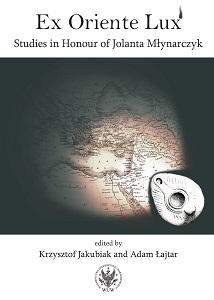HORUS AND SETH REVISITED. AN INCIDENT ON THE NILE DESCRIBED BY A ROMAN POET
HORUS AND SETH REVISITED. AN INCIDENT ON THE NILE DESCRIBED BY A ROMAN POET
Author(s): Adam Łukaszewicz
Subject(s): Archaeology
Published by: Wydawnictwa Uniwersytetu Warszawskiego
Keywords: Egypt; Dendera; Ombos; crocodile; Horus; Seth; Juvenal
Summary/Abstract: In their descriptions of Egypt, ancient writers mention conflicts inspired by religious differences. Strabo writes that the inhabitants of Tentyra (Dendera) differ from the rest of Egyptians, since they hate the crocodile most of all the animals. Juvenal states that in his time, during a conflict between two neighbouring towns, Tentyra and Ombos, one of the Tentyritae was captured by the enemy party and eaten raw. The aggressors were the Tentyritae. They were defeated by the inhabitants of Ombos and lost one of their fellow citizens. It seems that the Ombitae, who by the second century AD no longer practiced human sacrifice, found in the battle an opportunity to commit a cruel act of ritual cannibalism. The struggle between the worshippers of Seth (Ombos) and those of Horus (Dendera) seems to be inspired by the legend of the assassination of Osiris by Seth who dismembered his brother’s body, and the vengeance of Osiris’ son Horus. Horus had an important place in the religious life of Dendera. The Ombitae were worshippers of the crocodile, the animal of Seth. Horus appears in Egyptian iconography in various forms, including Harpocrates (“Horus the infant”). In the Roman period Seth is often represented as a crocodile. An echo of the mythical struggle between the Egyptian deities still survives in some modern works of art. In a square of the city of Warsaw there is a sculpture by Stanisław Jackowski (1887–1951) showing a little boy fighting with a crocodile, which should be interpreted as Harpocrates, the young Horus, in a struggle with Seth in his animal form.
Book: Ex Oriente Lux. Studies in Honour of Jolanta Młynarczyk
- Page Range: 105-110
- Page Count: 6
- Publication Year: 2020
- Language: English, French
- Content File-PDF

